An Aged/Autoimmune B-cell Program Defines the Early Transformation of Extranodal Lymphomas
- PMID: 36264161
- PMCID: PMC9839622
- DOI: 10.1158/2159-8290.CD-22-0561
An Aged/Autoimmune B-cell Program Defines the Early Transformation of Extranodal Lymphomas
Abstract
A third of patients with diffuse large B-cell lymphoma (DLBCL) present with extranodal dissemination, which is associated with inferior clinical outcomes. MYD88L265P is a hallmark extranodal DLBCL mutation that supports lymphoma proliferation. Yet extranodal lymphomagenesis and the role of MYD88L265P in transformation remain mostly unknown. Here, we show that B cells expressing Myd88L252P (MYD88L265P murine equivalent) activate, proliferate, and differentiate with minimal T-cell costimulation. Additionally, Myd88L252P skewed B cells toward memory fate. Unexpectedly, the transcriptional and phenotypic profiles of B cells expressing Myd88L252P, or other extranodal lymphoma founder mutations, resembled those of CD11c+T-BET+ aged/autoimmune memory B cells (AiBC). AiBC-like cells progressively accumulated in animals prone to develop lymphomas, and ablation of T-BET, the AiBC master regulator, stripped mouse and human mutant B cells of their competitive fitness. By identifying a phenotypically defined prospective lymphoma precursor population and its dependencies, our findings pave the way for the early detection of premalignant states and targeted prophylactic interventions in high-risk patients.
Significance: Extranodal lymphomas feature a very poor prognosis. The identification of phenotypically distinguishable prospective precursor cells represents a milestone in the pursuit of earlier diagnosis, patient stratification, and prophylactic interventions. Conceptually, we found that extranodal lymphomas and autoimmune disorders harness overlapping pathogenic trajectories, suggesting these B-cell disorders develop and evolve within a spectrum. See related commentary by Leveille et al. (Blood Cancer Discov 2023;4:8-11). This article is highlighted in the In This Issue feature, p. 1.
©2022 American Association for Cancer Research.
Conflict of interest statement
Figures

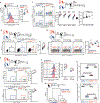
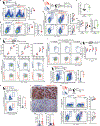

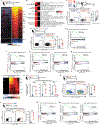
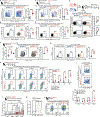
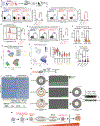
Comment in
-
Genetic Modeling of B-cell State Transitions for Rational Design of Lymphoma Therapies.Blood Cancer Discov. 2023 Jan 6;4(1):8-11. doi: 10.1158/2643-3230.BCD-22-0180. Blood Cancer Discov. 2023. PMID: 36534735 Free PMC article.
References
-
- Venturutti L, Melnick AM. The Role of Epigenetic Mechanisms in B Cell Lymphoma Pathogenesis. Annu Rev Cancer Biology 2021;5(1):311–30 doi 10.1146/annurev-cancerbio-060820-125304. - DOI
Publication types
MeSH terms
Grants and funding
LinkOut - more resources
Full Text Sources
Other Literature Sources
Molecular Biology Databases
Research Materials

